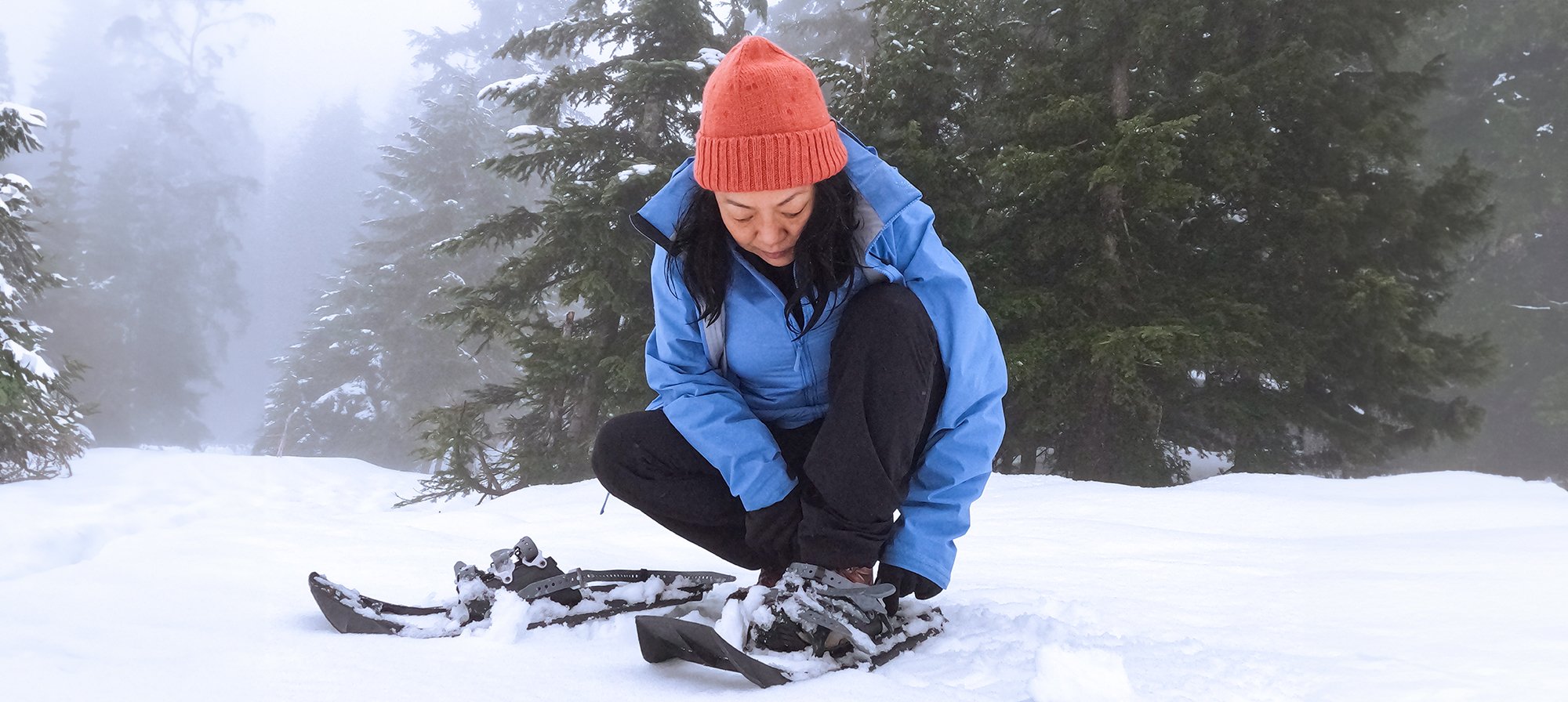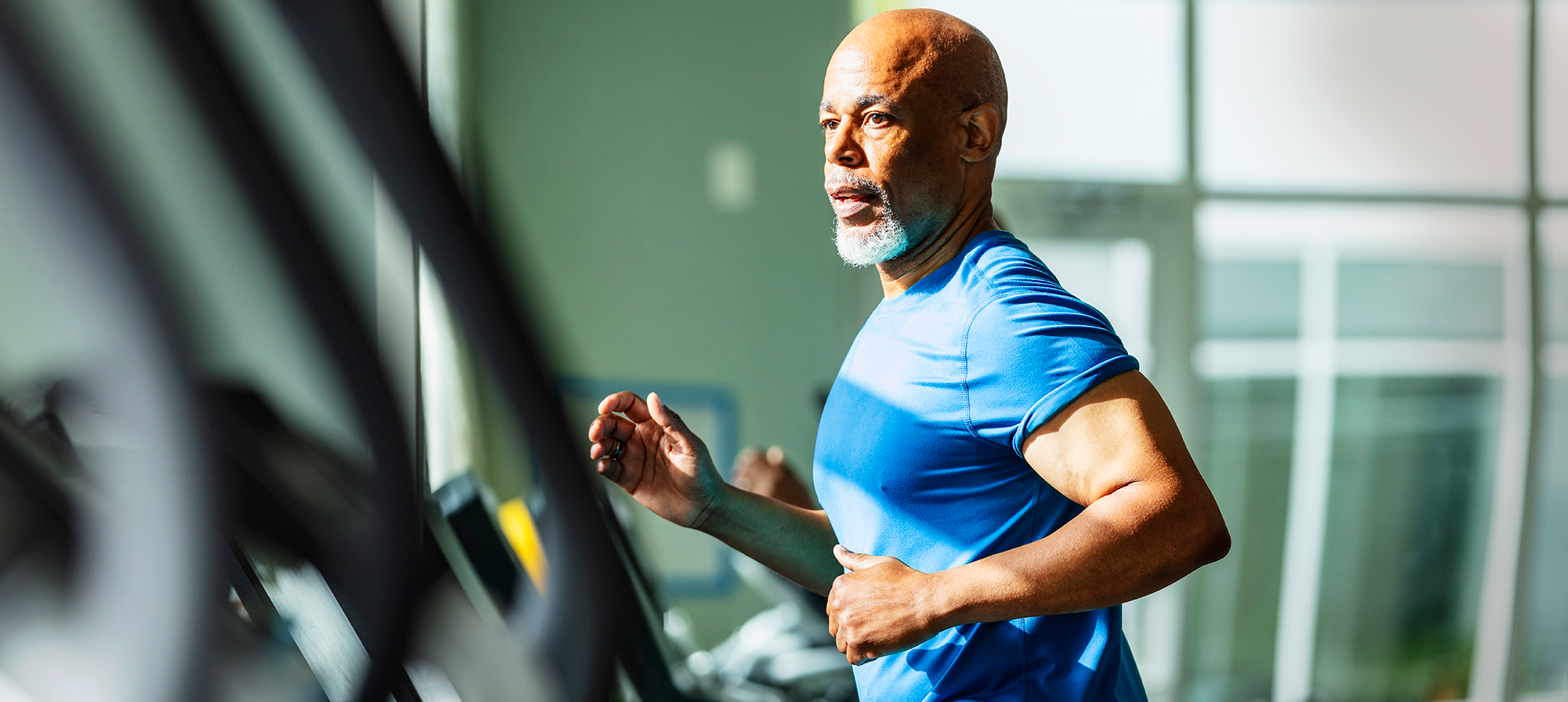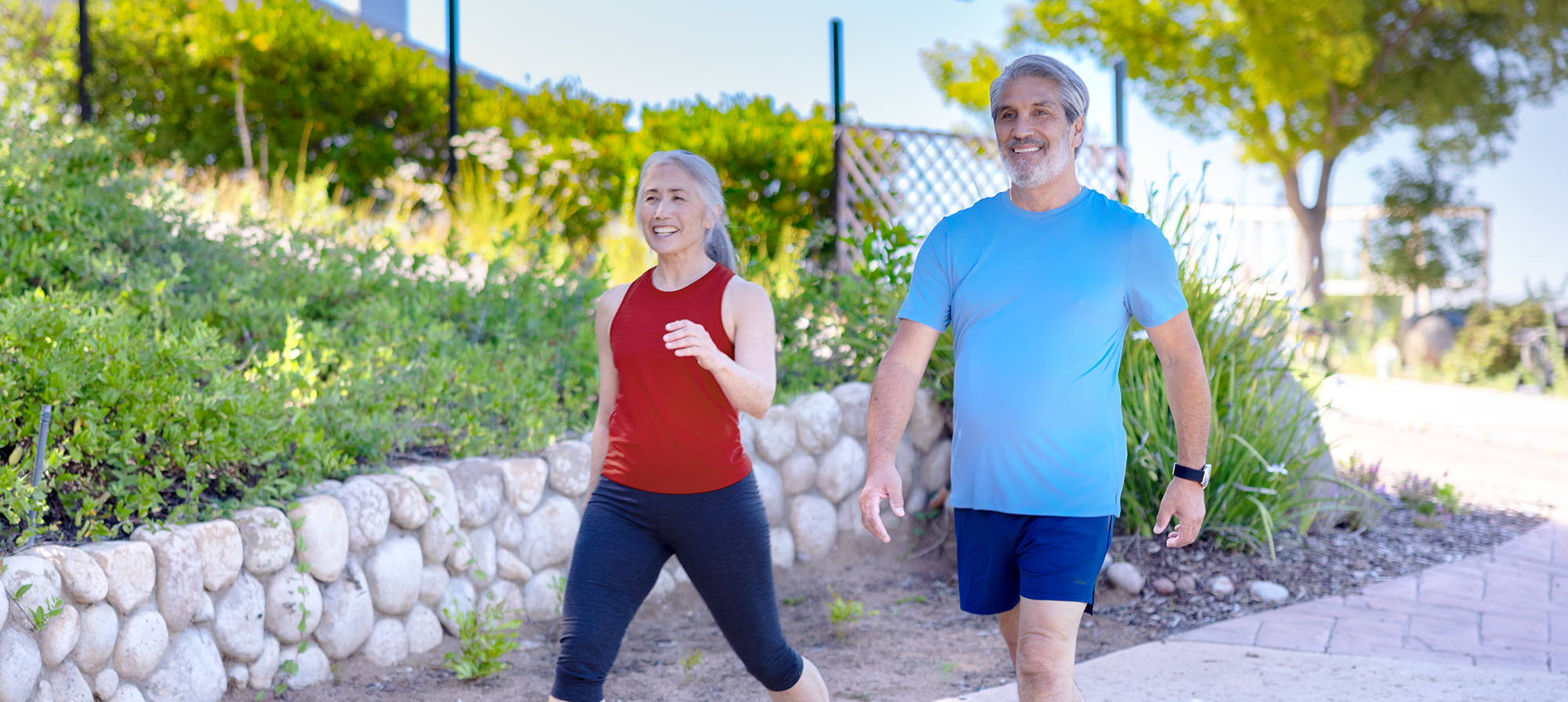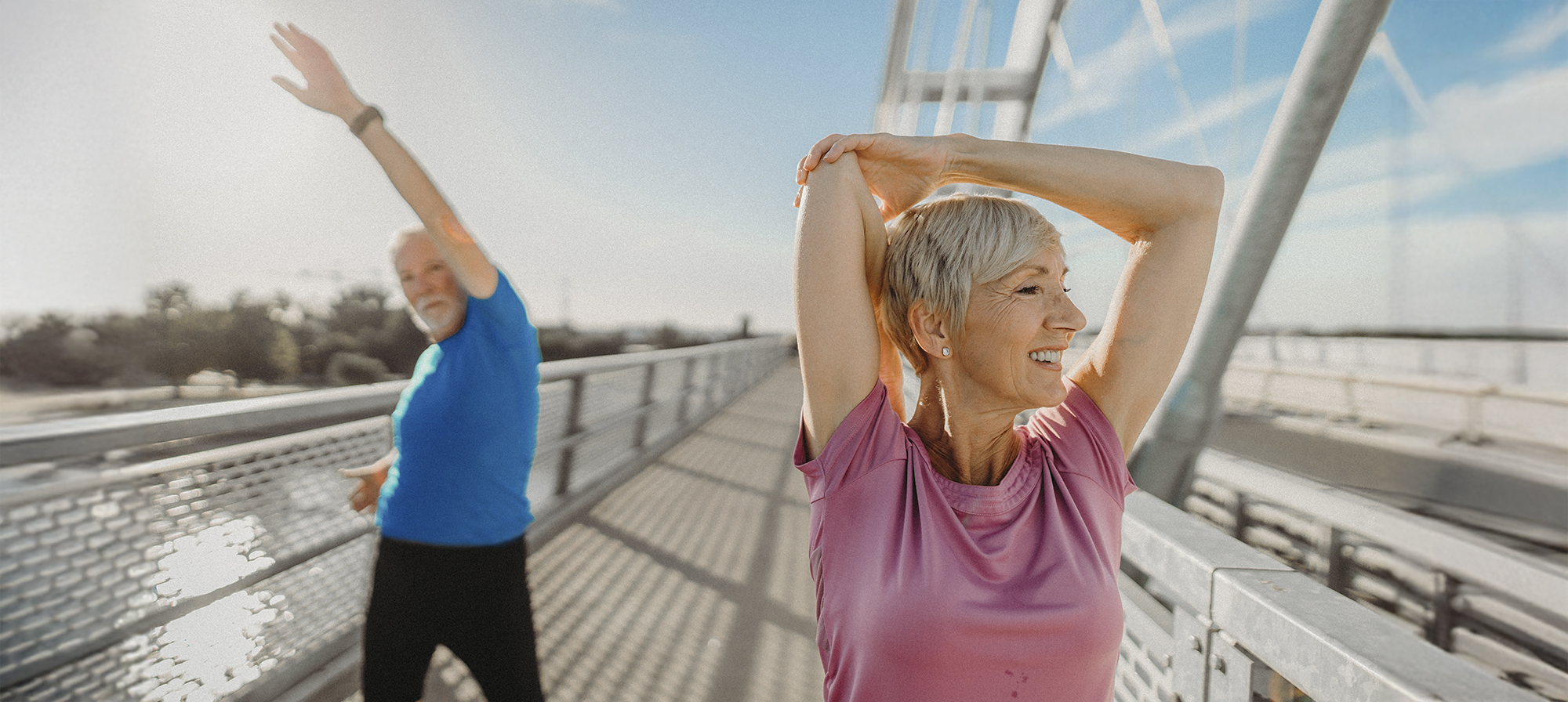Staying active can be hard in the chilly depths of winter, but these tips can help keep you moving—and having a blast while you’re at it.
With winter in full swing, and outdoor temps perpetually cold, your motivation for braving the chill for outdoor activities may start to dip, right along with the mercury in your thermometer. At the same time, the urge to stay curled up on the couch by a warm fire can grow stronger by the day.
Unfortunately, the longer you remain in a sedentary mode, the more likely you’ll want to stay that way. Worse, you’ll miss out on fun outdoor activities that can keep you moving throughout the winter. And staying active—all year long—is a better choice for your overall health, fitness, and mental well-being.
Now you can find ways to push past your wintertime inertia even when outside temperatures plummet. Here are some ways to help get you moving.
Embrace the cold weather and get active outdoors
Unless the temperatures are dangerously low, it’s worthwhile to bundle up and take it outside. Research suggests that outdoor workouts lift your mood and well-being even more than indoor workouts. The fresh air, natural light, and exercise all combine to play a big role in providing these mental health perks.
Just keep a close eye on the weather before heading out. If the forecast calls for subfreezing temperatures or a storm, keep this in mind. You can also recruit a few neighbors or friends and turn fun outdoor activities into a group experience with the opportunity to bond and socialize.
Below are a few options you may want to try.
1. Walking. Meet up with a friend or neighbor for a brisk walk. If the sidewalks are snowy or icy you can still go, but be careful and wear micro-spikes on the soles of your shoes for added gripping. Dress warmly, with breathable top layers, and warm leggings and socks. Don’t forget gloves, a scarf, and a hat. Apply sunscreen, get your sunglasses, and head out.
To add a bit of intensity to your walk, search for some open fields near your home. As long as the snow’s not too deep, a trudge through a field of freshly fallen snow makes for a great cardio workout—one that will work your leg muscles. Cross-country ski centers may also have trails open for walking with micro-spikes, or for snowshoeing if the snow is too deep.  2. Hiking. If you live near a local park, outdoor preserve, or cross-country ski center, you can call to find out if any of the trails are open for hiking. Just make sure you wear micro-spikes or crampons when hiking on icy trails. Dress warmly, hike with a buddy, and bring a fully charged cell phone along.
2. Hiking. If you live near a local park, outdoor preserve, or cross-country ski center, you can call to find out if any of the trails are open for hiking. Just make sure you wear micro-spikes or crampons when hiking on icy trails. Dress warmly, hike with a buddy, and bring a fully charged cell phone along.  3. Cross-country skiing. Going for a run outside can be tricky if there’s snow in the way. Try cross-country skiing if you’re looking for a similar workout. It’s kind of like running in the snow except you clip into a pair of bindings where your heel remains free. The boots flex forward and allow a striding motion. The skis are relatively skinny, but provide stability, while you use your poles for balance. This works your upper body, too—making cross-country skiing a vigorous full-body workout! It works your core, the large muscles of your legs, and your arms and shoulders, too.
3. Cross-country skiing. Going for a run outside can be tricky if there’s snow in the way. Try cross-country skiing if you’re looking for a similar workout. It’s kind of like running in the snow except you clip into a pair of bindings where your heel remains free. The boots flex forward and allow a striding motion. The skis are relatively skinny, but provide stability, while you use your poles for balance. This works your upper body, too—making cross-country skiing a vigorous full-body workout! It works your core, the large muscles of your legs, and your arms and shoulders, too.
Cross-country skiing is also a meditative and nature-filled way to exercise. It’s not just a workout, it’s a journey. You may find that it calms your mind and feeds your soul as you climb through stands of tall trees and glide onto rolling fields full of sunshine.
As with any outdoor winter sport, check the weather report before heading to a remote area for the day. Or look for a cross-country ski center. These venues have gear rentals, groomed trails, and a warm lodge where you can enjoy a cup of hot chocolate after your excursion. If you’ve never tried cross-country skiing before, a center may also offer lessons to help get you started.
 4. Fat tire biking. If you enjoy mountain biking in warmer seasons, think about trying fat tire biking in winter. Fat bikes have wide tires that can be used in snowy conditions. Many cross-country ski areas have groomed and ungroomed single-track trails for an adventurous, all-terrain form of cycling in the snow.
4. Fat tire biking. If you enjoy mountain biking in warmer seasons, think about trying fat tire biking in winter. Fat bikes have wide tires that can be used in snowy conditions. Many cross-country ski areas have groomed and ungroomed single-track trails for an adventurous, all-terrain form of cycling in the snow.  5. Snowshoeing. This activity is a great way to get around in deep snow; plus, it doubles as a low-impact cardio workout. You can rent equipment or bring your own to any center that has marked trails. You can also use poles. Modern snowshoes can be aluminum framed or made of wood. They are lightweight and make it easier to move over the snow. There are many models, so do some research on different types of snowshoes if you’re new to the sport.
5. Snowshoeing. This activity is a great way to get around in deep snow; plus, it doubles as a low-impact cardio workout. You can rent equipment or bring your own to any center that has marked trails. You can also use poles. Modern snowshoes can be aluminum framed or made of wood. They are lightweight and make it easier to move over the snow. There are many models, so do some research on different types of snowshoes if you’re new to the sport.
With snowshoeing, you can go at your own pace or pick it up for a more intense workout. You can use the center’s groomed trails or venture into deeper powder. As with cross-country skiing, get some lessons first if you’re new to it. And only go to remote areas after checking the weather and finding a buddy to join you.  6. Downhill snow adventures. If you’re a fit and experienced downhill skier or snowboarder , you might plan a trip to the local mountains for a few days this winter.
6. Downhill snow adventures. If you’re a fit and experienced downhill skier or snowboarder , you might plan a trip to the local mountains for a few days this winter.
But even if you’re new to downhill skiing, it can still be a blast. Just find an all-mountain ski center where you can take lessons, rent skis, poles, and boots, and learn to safely ride the chair lift. Trail maps can lead you to the hills for beginner, intermediate, and advanced skiers alike.
Downhill skiing provides the thrill and freedom of performing technical turns as you move swiftly down the mountain. These same maneuvers put you in control of your speed and allow you to stop at any time.
You can enjoy a fun-filled day in nature as well as the camaraderie of striking up a conversation with fellow skiers on the chairlift.  7. Ice skating. A classic winter activity, ice skating is another winter sport you can enjoy with family and friends. If you’re new to ice skating, take lessons first. Avoiding falls during your ice-skating sessions is important. Having strong legs and ankles, as well as a bit of skill, helps lower your fall risk.
7. Ice skating. A classic winter activity, ice skating is another winter sport you can enjoy with family and friends. If you’re new to ice skating, take lessons first. Avoiding falls during your ice-skating sessions is important. Having strong legs and ankles, as well as a bit of skill, helps lower your fall risk.  8. Snow play. Tune in to your inner child and get outside with your grandchildren or friends to build a snowman or snow fort. You can also head out with a friend, family member, or neighbor for creative ways to play in the snow.
8. Snow play. Tune in to your inner child and get outside with your grandchildren or friends to build a snowman or snow fort. You can also head out with a friend, family member, or neighbor for creative ways to play in the snow.
Or look for hills where you can go sledding. The best hills have a gradual incline and a long, smooth runout. Snowball fights can also be a joyful way to get active and drum up a group activity for all ages. (Keep in mind that the best snowballs are powdery and soft, not packed hard or made with ice.)  9. Outdoor chores. You may already engage in wintertime chores like shoveling, clearing snow, or making sure your roof is safe from snow buildup. If you shovel the sidewalk or driveway after heavy snowfall, you’ve got a built-in workout. In fact, snow shoveling can burn about 200 calories every half hour. Learn about snow shoveling equipment and how to protect your heart health when doing strenuous outdoor chores in winter.
9. Outdoor chores. You may already engage in wintertime chores like shoveling, clearing snow, or making sure your roof is safe from snow buildup. If you shovel the sidewalk or driveway after heavy snowfall, you’ve got a built-in workout. In fact, snow shoveling can burn about 200 calories every half hour. Learn about snow shoveling equipment and how to protect your heart health when doing strenuous outdoor chores in winter.

Important safety tips for exercising outdoors in cold weather
- Keep in mind that some downhill winter sports come with a heightened risk for falls and injuries. Downhill skiing, snowboarding, sledding, and ice skating require a certain level of balance, coordination, strength, endurance, and skill. So, if you’re new to these, get lessons when first starting out—and make sure you have a basic level of fitness.
Check with your doctor first if it’s been a while since you’ve exercised vigorously or are thinking of engaging in downhill snow sports. If you have certain conditions, such as weak bones , joint pain, or another health condition—these sports may not be safe for you. - Also, vigorous exercise in cold temps may increase the risk for heart attack. Talk with your doctor before exercising in cold weather if you have poor blood circulation, high blood pressure, heart disease, asthma, are out of shape, or have any other health concerns.
- Warm up more thoroughly when exercising in the cold.
- Try to keep moving once you start exercising. If you need to stop and rest for any length of time, go indoors.
- Dress warmly, but not too warmly. Layers you can peel off, if needed, are a good choice.
- Bring a fully charged cell phone with you whenever venturing outdoors in cold weather.
- Whether your balance is up to par or not, avoid any kind of outdoor activities on icy surfaces—or wear micro-spikes on the bottom of your shoes if ice is present. The number of falls and injuries goes up in winter. And slippery ice is often to blame.

- Avoid accidental hypothermia with these additional safety tips.
- Don’t go too deeply into the back country in winter. Stay within the vicinity of your car, house, or other indoor lodging in case of sudden temperature drops. And never go alone.
- If you start to feel numb in any body part, stop. Then seek shelter indoors.
- Don’t exercise outdoors when the thermometer reads 5 to 10 degrees Fahrenheit or lower, or in a cold wind or rain. But ultimately, use your own judgment. Even if the mercury is higher than 5 to 10 degrees, don’t exercise outdoors if the temp feels too uncomfortable for you. Do an indoor workout instead.
- Seek medical care right away if you start to experience any signs of hypothermia. These include uncontrollable shivering, severe fatigue, problems with speech, or a loss of motor coordination.

Simply too cold outside? Stay active indoors, instead
If the outdoor temperatures drop dangerously low, or you just can’t muster the motivation to bundle up, you can find ways to stay active indoors, instead. Here are a few ideas to help get you off the couch:- Turn your living room into a gym. Cold weather can lead to icy roads and poor visibility. And these conditions can make it hard to get to the gym. No problem. You can create your own gym right in the comfort of your home.
Find some space that you can dedicate to your workouts. Purchase a mat, along with some hand weights, resistance bands, and tubing. Then stream an online fitness video or craft your own cardio and strength training circuit to do at home.
If you have a spacious basement and the budget, you might want to add more sophisticated equipment, such as a treadmill, elliptical, or stair climber. You could also buy medicine balls, suspension straps , or battle ropes. Or opt for an equipment-free home gym instead. Body weight training and cardio workouts can easily be done indoors—no gear required. Opt for an equipment-free home gym instead. Body weight training and cardio workouts can easily be done indoors—no gear required.
- Do some indoor chores. Get a jumpstart on your spring cleaning and spend some time reorganizing cabinets or cleaning out your closet or fridge. Put on some headphones and stream your favorite playlist while you vacuum, sweep, mop, wash windows, or do the dishes. Keep pace with the rhythm of the music to turn housework into a workout. Vigorous bouts of household chores can make for great calorie-burning workouts.

- Take screen breaks. It may be tempting to park yourself on the couch and stare at your phone, TV, tablet, or laptop when you’re stuck inside. But too much screen time just leads to more sitting. And it can also raise stress and anxiety and disrupt your sleep.
Step away from the screen at regular intervals. If it helps, set an alarm on your phone to remind you to take breaks. Get up and move around. Hit your indoor gym. You can even march in place or walk up and down your stairs if you have them. Do 5 to 10 minutes of stretching, yoga, or tai chi. You may find such active mini breaks help boost your energy and relax you.
Just remember that on days when the weather is too extreme and you’re stuck indoors, balance your activities and exercise inside.
Keep in mind that staying active—whether downhill skiing, shoveling, or working out in your home gym—will help you maintain your health and fitness. You can keep the wintertime blues at bay and replace them with a happier, lighthearted mood.
Not a Silver&Fit® member? Learn more about everything the program has to offer, including more helpful healthy living tips like this, here on our website.
This information is not intended to take the place of regular medical care or advice. Please check with your doctor before using this information or beginning any self-care program. Images used for this article do not depict any members of the Silver&Fit Program.
References
American Heart Association. (2015, July 31). Cold weather and cardiovascular disease. https://www.heart.org/en/health-topics/consumer-healthcare/what-is-cardiovascular-disease/cold-weather-and-cardiovascular-disease
Bryant, C. X. (2018, January 5). Keeping cold weather physical activity safe. American Council on Exercise. https://www.acefitness.org/resources/pros/expert-articles/6902/keeping-cold-weather-physical-activity-safe/
Centers for Disease Control and Prevention.(2019, February 13). Digging out: 5 ways to prepare your health to shovel snow. https://blogs.cdc.gov/publichealthmatters/2019/02/shovel_smart/
Christensen, M. A, Bettencourt, L., Kaye, L., Moturu, S.T., Nguyen, K.T., Olgin, J. E., Pletcher, M. J., Marcus, G. M. (2016, November 9). Direct measurements of smartphone screen-time: Relationships with demographics and sleep. PLoS One, 11(11), e0165331. https://doi.org/10.1371/journal.pone.0165331
Cleveland Clinic. (2018, January 2). Cross-country versus downhill skiing: Which makes you more fit? https://health.clevelandclinic.org/cross-country-vs-downhill-skiing-which-makes-you-more-fit/
Connolly D. A. (2002, November). The energy expenditure of snowshoeing in packed vs. unpacked snow at low-level walking speeds. Journal of strength and conditioning research, 16(4), 606–610. https://pubmed.ncbi.nlm.nih.gov/12423193/
Halcon, L. (n.d.). How does your personal environment impact your wellbeing? https://www.takingcharge.csh.umn.edu/enhance-your-wellbeing/environment/your-personal-environment/how-does-your-personal-environment-impa
Harvard Health Publishing. (2018, December 1). The wonders of winter workouts: Exercising in colder temperatures offers several advantages. https://www.health.harvard.edu/staying-healthy/the-wonders-of-winter-workouts
Harvard Health Publishing. (2021, September 16). Osteopenia: When you have weak bones but not osteoporosis. https://www.health.harvard.edu/womens-health/osteopenia-when-you-have-weak-bones-but-not-osteoporosis
HelpGuide.org. (2023, March 1). Seasonal Affective Disorder.
https://www.helpguide.org/articles/depression/seasonal-affective-disorder-sad.htm
Hippi, M., & Kangas, M. (2022). Impact of Weather on Pedestrians' Slip Risk. International journal of environmental research and public health, 19(5), 3007. https://doi.org/10.3390/ijerph19053007
Hosford, B. (2016, December 29). Embrace the cold: How to get a in a workout in below-freezing temperatures. American Council on Exercise. https://www.acefitness.org/resources/pros/expert-articles/6210/embrace-the-cold-how-to-get-in-a-workout-in-below-freezing-temperatures/
Kuijsters A, Redi J, de Ruyter B, Heynderickx I. Lighting to Make You Feel Better: Improving the Mood of Elderly People with Affective Ambiences. PLoS One. 2015 Jul 20;10(7): e0132732. https://doi.org/10.1371/journal.pone.0132732
Monz, C., & Kulmatiski, A. (2016, October). The “emergence” of fat bikes in the USA: Trends, potential conflicts, and management implications. Journal of Outdoor Recreation and Tourism, 15, 20-25. https://doi.org/10.1016/j.jort.2016.04.001
Utah State University. (2022, July 1). The mental benefits of decluttering. https://extension.usu.edu/mentalhealth/articles/the-mental-benefits-of-decluttering
Wang, T. and Vella-Brodrick, D. (2018) Examining screen time, screen use experiences, and well-being in adults. Social Networking, 7, 32-44. Doi: 10.4236/sn.2018.71003 .
This article was written by Gail Olson, edited by Kimberley Reynolds, and clinically reviewed by Elizabeth Thompson, MPH, RD





